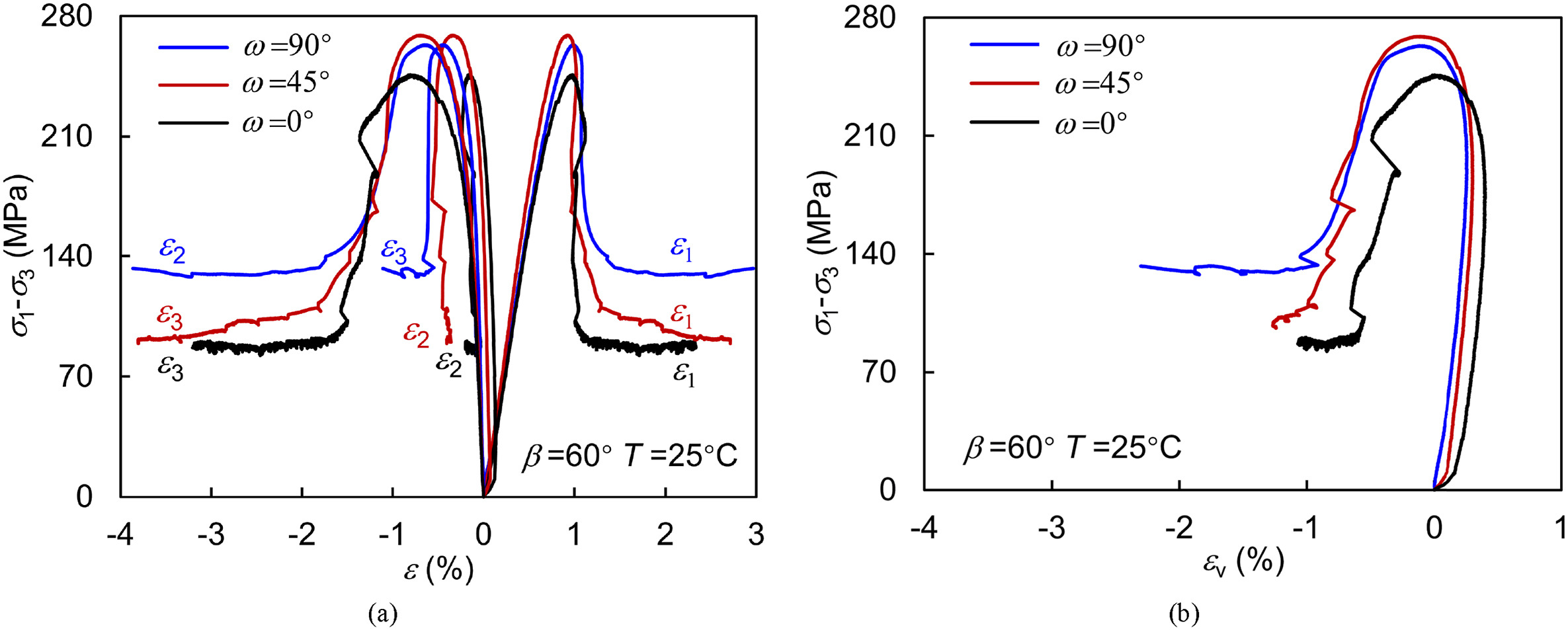JRMGE / Vol 16 / Issue 3
Anisotropic strength, deformation and failure of gneiss granite under high stress and temperature coupled true triaxial compression
Hongyuan Zhou, Zaobao Liu, Fengjiao Liu, Jianfu Shao, Guoliang Li
Show More
a Key Laboratory of Ministry of Education on Safe Mining of Deep Metal Mines, College of Resources and Civil Engineering, Northeastern University, Shenyang,
110819, China
b Institute of Deep Engineering and Intelligent Technology, Northeastern University, Shenyang, 110819, China
c University Lille, CNRS, Centrale Lille, UMR 9013-LaMcubeeLaboratoire de Mécanique, Multiphysique, Multi-échelle, F-59000, Lille, France
d State Key Lab on Rail & Transit Engineering Informatization, China Railway First Survey and Design Institute Group Co. Ltd, Xi’an, 710043, China
2024, 16(3): 860-876. doi:10.1016/j.jrmge.2023.06.012
Received: 2023-02-01 / Revised: 2023-04-20 / Accepted: 2023-06-15 / Available online: 2023-09-06
2024, 16(3): 860-876.
doi:10.1016/j.jrmge.2023.06.012
Received: 2023-02-01
Revised: 2023-04-20
Accepted: 2023-06-15
Available online: 2023-09-06
The anisotropic mechanical behavior of rocks under high-stress and high-temperature coupled conditions is crucial for analyzing the stability of surrounding rocks in deep underground engineering. This paper is devoted to studying the anisotropic strength, deformation and failure behavior of gneiss granite from the deep boreholes of a railway tunnel that suffers from high tectonic stress and ground temperature in the eastern tectonic knot in the Tibet Plateau. High-temperature true triaxial compression tests are performed on the samples using a self-developed testing device with five different loading directions and three temperature values that are representative of the geological conditions of the deep underground tunnels in the region. Effect of temperature and loading direction on the strength, elastic modulus, Poisson's ratio, and failure mode are analyzed. The method for quantitative identification of anisotropic failure is also proposed. The anisotropic mechanical behaviors of the gneiss granite are very sensitive to the changes in loading direction and temperature under true triaxial compression, and the high temperature seems to weaken the inherent anisotropy and stress-induced deformation anisotropy. The strength and deformation show obvious thermal degradation at 200 °C due to the weakening of friction between failure surfaces and the transition of the failure pattern in rock grains. In the range of 25 °C–200 °C, the failure is mainly governed by the loading direction due to the inherent anisotropy. This study is helpful to the in-depth understanding of the thermal-mechanical behavior of anisotropic rocks in deep underground projects.
Keywords: Anisotropic strength and deformation, True triaxial compression, Thermal mechanical coupling, Deep rock mechanics, High temperature rock mechanics
Article Data
Author(s) Information
Zaobao Liu

Prof. Zaobao Liu is currently the vice dean of the School of Resources and Civil Engineering, Northeastern University, Shenyang, China. He is also the executive deputy director of the Key Laboratory of Ministry of Education on Safe Mining of Deep Metal Mines, China. His research interests cover high-temperature rock mechanics, seepage mechanics of unconventional geological reservoirs, geological disposal of high-level radioactive waste, and deep energy mining. He has been awarded the Changjiang Scholars Program and the 1st-class prize of the Science & Technology Progress Award of the Chinese Society of Rock Mechanics and Engineering (CSRME). He has been the coordinating investigator of dozens of research funds from the Natural Science Foundation of China, the China Ministry of Science and Technology, Liaoning Province, etc. He serves as the vice chairman of the Multi-field Coupling Sub-society of CSRME, a member of the International Society for Rock Mechanics and Rock Engineering (ISRM), and the editorial board member of several journals.

